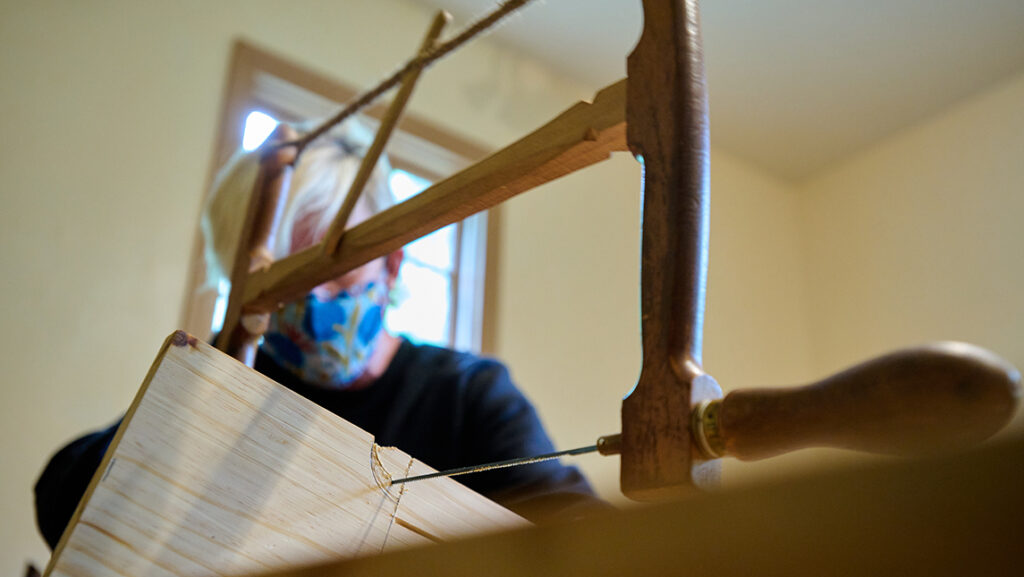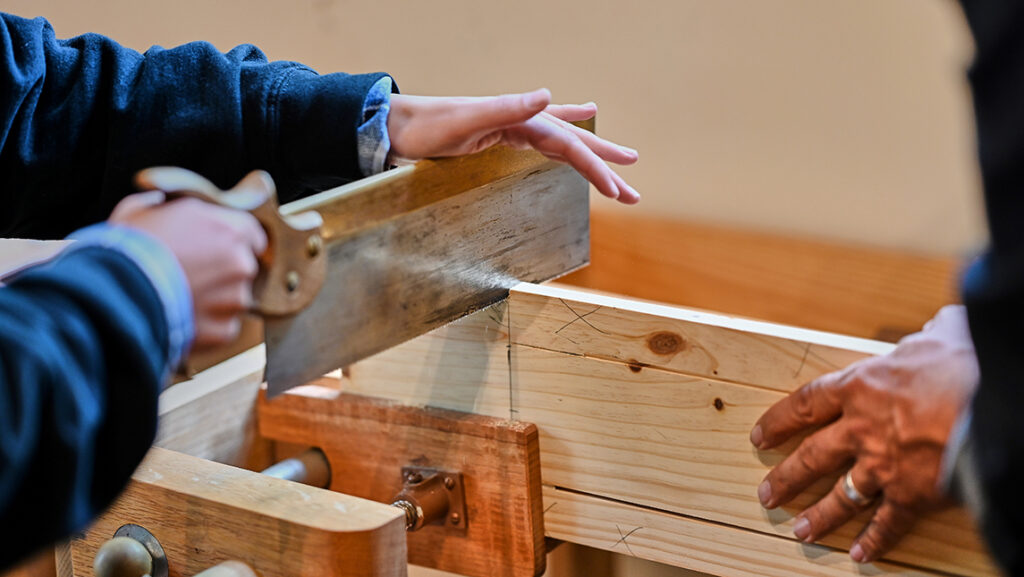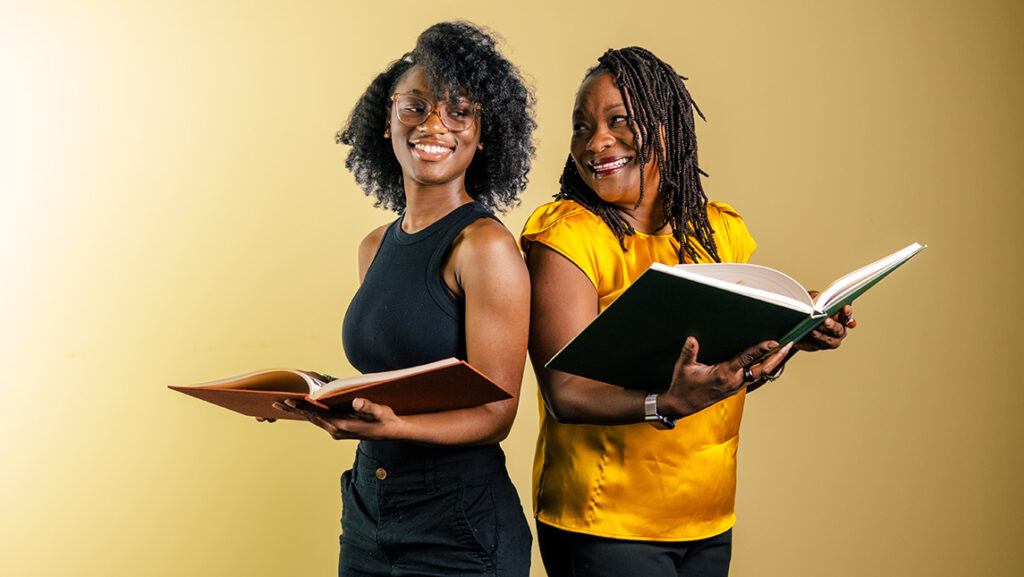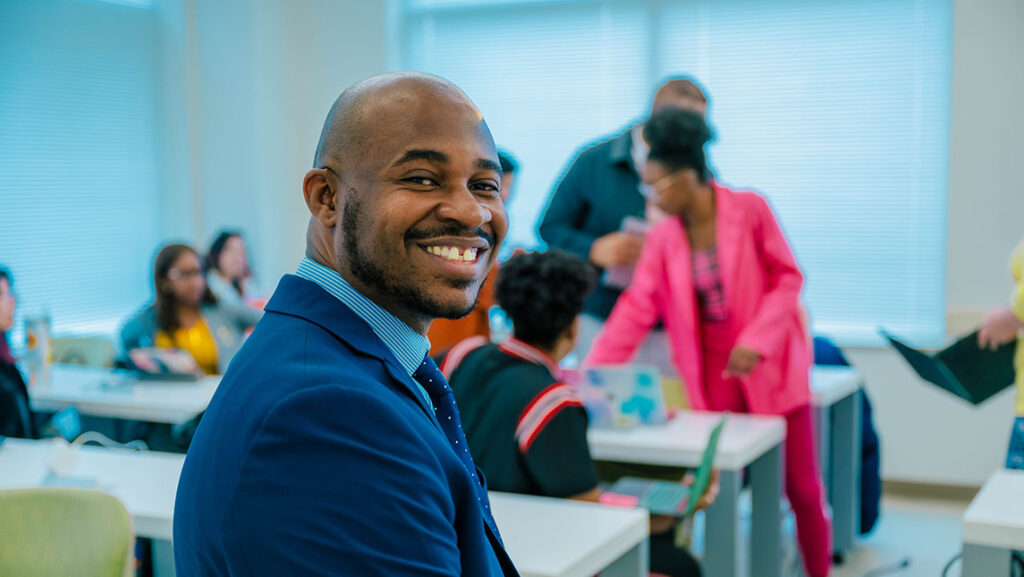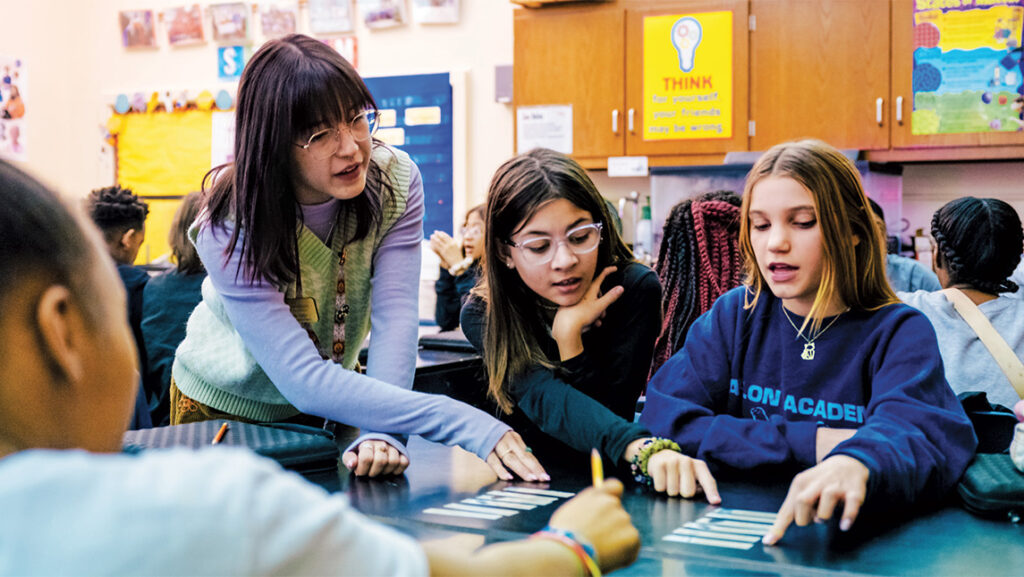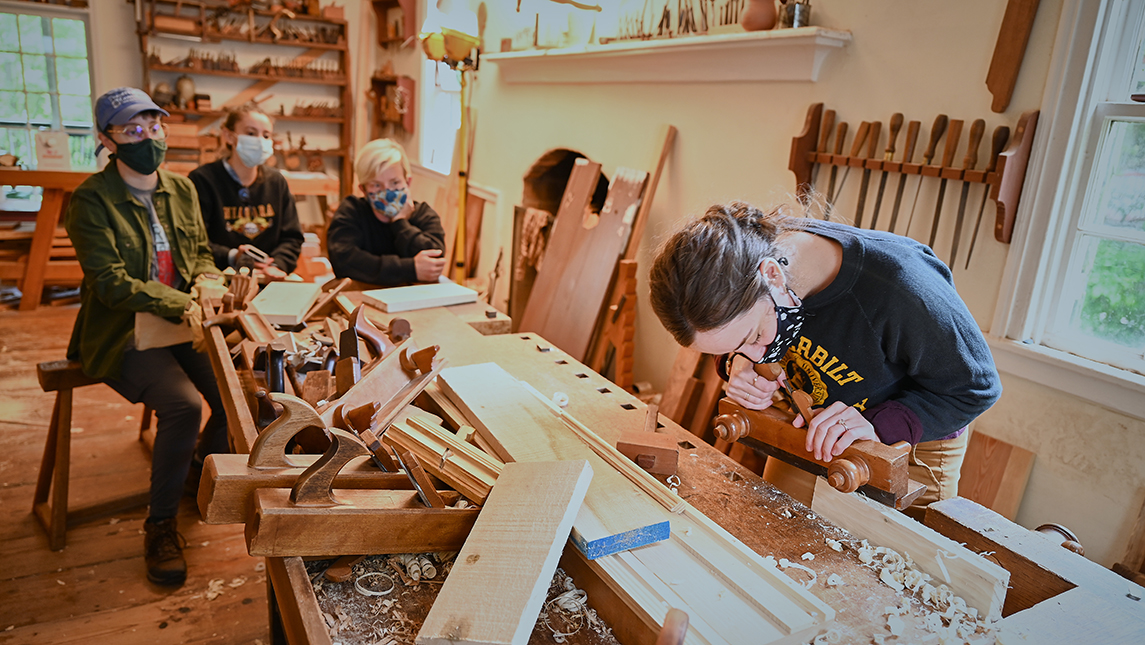
For three weeks in May, a group of eight UNC Greensboro students forged metals, split shingles, conducted paint analysis, and learned all things historic preservation.
The annual historic preservation field school, led by Professor Emerita Jo Ramsay Leimenstoll, provides students the opportunity to learn the fundamental principles of historic preservation and architectural conservation.
The course is designed for master’s students in history and interior architecture, as well as students completing the post-baccalaureate certificate program in historic preservation.
A key characteristic of the field school is hands-on learning. Students learn the basics of woodworking, masonry, building, etc. through workshops with some of the best in the business. A grant from the Marion Stedman Covington Foundation helped fund the three-week experience.
“The field school allows students the opportunity to apply what they’ve been learning in their seminars and classes,” said Leimenstoll. “The hands-on experience is key. It’s so hard to be a preservationist and not know how to talk to a craftsman or a contractor about what needs to happen.”
The first week was spent at Old Salem. Students participated in a workshop at the Gunsmith Shop, forging and casting metals with Blake Stevenson and Ben Masterson. There was an all-day session on wood joinery at the Blum House. Students participated in a walking tour of brickwork throughout Old Salem, and then tried their hand at repointing brick mortar joints.
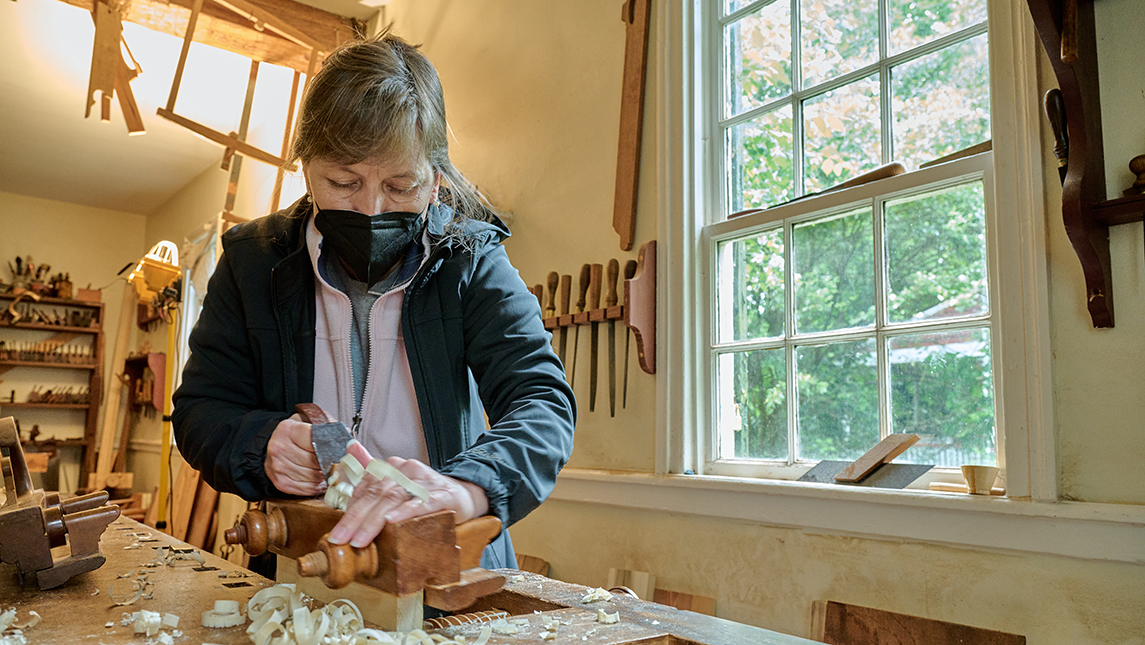
During the second week, students worked in the East Wilson Historic District in Wilson, North Carolina. MFA student Monica T. Davis has been working to restore five homes in the district, once home to the largest population of working-class African Americans in the state. Under the guidance of restoration specialists from the State Preservation Office, the field school students worked on two of Davis’ homes throughout the week. They repaired windows, patched flooring, and replaced deteriorated clapboards.
“There used to be 300 shotgun houses in the East Wilson Historic District, and now there are only 90 left,” said Gus Adams, a builder from Asheville, North Carolina, and a student in the certificate program. “Preserving those structures is really important. Without these homes, they may lose that designation.”
The final week of the field school included a gravestone restoration workshop at Second St. Philips Cemetery in Winston-Salem. Many enslaved people were buried at the site, and little is known about these individuals. Some of the graves have markers that simply say “Beloved.”
“There is so much interest in learning the history and telling the story of African American cemeteries. Our students felt really privileged to be a part of this work,” said Leimenstoll.
Students ended their time together with reflections and presentations on lessons learned. For many, the experience was critical to their professional development.
“It’s really important to learn how to think like a preservationist and to understand the mechanics of different parts of a building,” said Katie Lowe, a master’s student in the Museum Studies program. “We’ve been on Zoom this past year, so it’s been so good to actually get inside buildings and put our hands on stuff.”
In addition to hands-on experience, students get exposed to an important network of industry professionals. When they leave UNCG, they will have contacts in preservation across the state. Field school alumni have gone on to work in design firms, preservation consulting firms, local government, nonprofit organizations, and state historic preservation offices.
The field school is also an important community engagement project. Since the field school’s launch in 2001, Leimenstoll has worked with partners across the state to find meaningful, impactful projects that help transform local communities.
“We’ve always picked deserving, worthwhile projects that make the students feel like they are making a difference,” Leimenstoll said. “It’s not just about learning how to do something – it’s about applying that knowledge by working on a project for the good of the community.”
Story by Alyssa Bedrosian, University Communications
Photography by Martin W. Kane, University Communications
